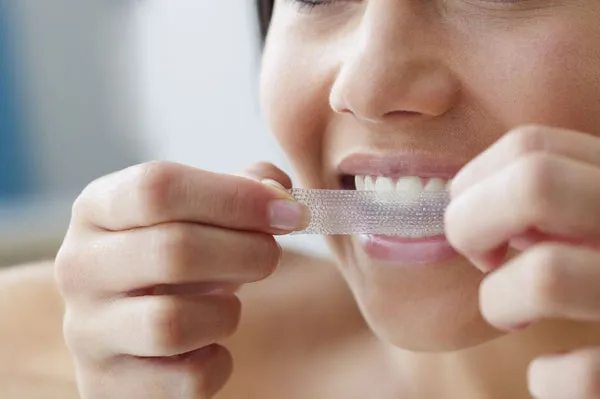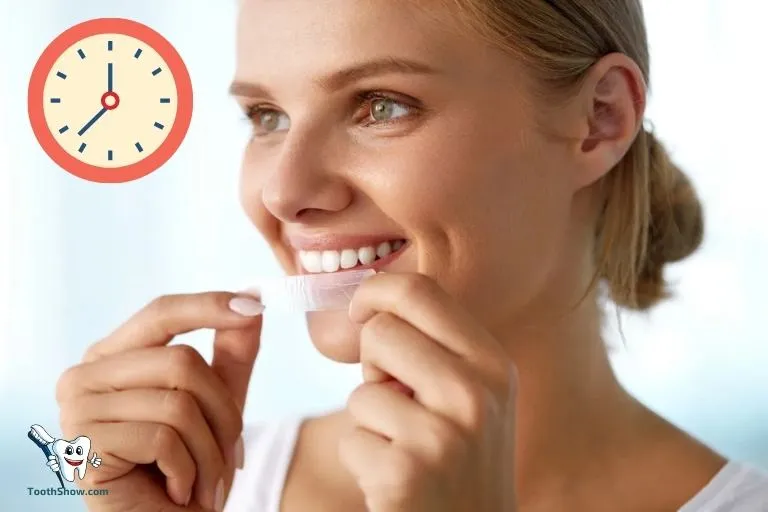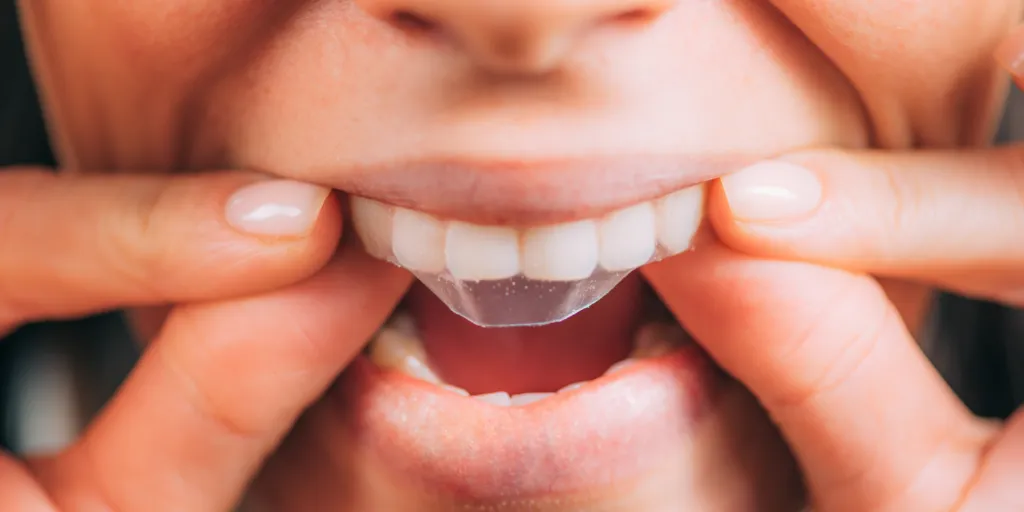Understanding Teeth Whitening Strips
Teeth whitening strips have become a popular at-home method for achieving a brighter smile. These thin, flexible strips are coated with a peroxide-based whitening agent, designed to adhere to the surface of your teeth and gradually lighten their shade. They offer a convenient and relatively inexpensive alternative to professional whitening treatments. However, understanding how they work and how to use them safely is crucial for achieving the best results without causing harm to your teeth or gums. This comprehensive guide will delve into the intricacies of teeth whitening strips, providing you with the knowledge you need to use them effectively and safely.
What Are Teeth Whitening Strips
Teeth whitening strips are typically made of a thin, flexible plastic material, such as polyethylene or polypropylene. This material is designed to conform to the shape of your teeth, ensuring that the whitening agent makes consistent contact with the enamel. The active ingredient in most whitening strips is hydrogen peroxide or carbamide peroxide. These chemicals work by breaking down stains and discoloration on the surface of the teeth. The concentration of the peroxide varies depending on the brand and the intended strength of the treatment. Understanding the composition of these strips is the first step in using them properly.
How Do Teeth Whitening Strips Work

When applied to the teeth, the peroxide in the whitening strips penetrates the enamel and breaks down the stain molecules that cause discoloration. This process is known as oxidation. The oxygen molecules released by the peroxide react with the stain molecules, effectively lightening them. The effectiveness of the strips depends on several factors, including the concentration of the peroxide, the duration of the application, and the type of stains present. Consistent use, as directed, is key to achieving noticeable results. The strips work by gradually removing the stains, leading to a brighter smile over time. Regular use as directed is important for the best results.
Types of Teeth Whitening Strips
There are various types of teeth whitening strips available, each offering different features and concentrations of whitening agents. Some strips are designed for daily use, while others are intended for use once or twice a week. The concentration of hydrogen peroxide or carbamide peroxide also varies. Some strips are formulated for sensitive teeth, containing lower concentrations of the active ingredient to minimize discomfort. It’s essential to choose the type of strip that suits your needs and sensitivity levels. Consider your existing oral health conditions when selecting a type. Read product labels to choose the best product for your needs.
Determining the Right Time to Leave Strips On
Knowing how long to leave teeth whitening strips on is critical for both effectiveness and safety. Exceeding the recommended time can lead to increased sensitivity and gum irritation, while leaving them on for too short a time may not yield the desired results. Always refer to the product instructions for the most accurate guidance. However, there are several factors you need to consider. Different brands have different formulations, so the recommended application time can vary significantly. Carefully reading and adhering to the instructions is a must for safety and optimal results.
Reading the Product Instructions

The product instructions are your primary guide. Each brand of teeth whitening strips will have specific instructions regarding the application time, typically ranging from 5 to 30 minutes, depending on the concentration of the whitening agent. The instructions will also provide information on how often to use the strips and how long to continue the treatment. Never deviate from the instructions. Before starting any teeth whitening regimen, read the instructions carefully. If you’re unsure about any aspect of the instructions, consult your dentist for clarification. Following instructions helps minimize the risk of side effects and maximizes effectiveness.
Factors Influencing Whitening Strip Duration
Several factors influence how long you should leave teeth whitening strips on. Your teeth sensitivity is a major factor. The strength of the whitening agent is also crucial. These factors influence how your teeth will react to the whitening process. If you have sensitive teeth, you may need to use strips with a lower concentration of the whitening agent or reduce the application time. Understanding how these factors interact is essential for a safe and effective teeth whitening experience.
Sensitivity of Your Teeth
Tooth sensitivity is a common side effect of teeth whitening. If you already have sensitive teeth, or if you experience increased sensitivity during the whitening process, it’s important to shorten the application time or switch to a product with a lower concentration of the whitening agent. Some people may find their teeth become temporarily sensitive to hot or cold foods and drinks. If this occurs, take a break from the whitening treatment and consult your dentist. Using desensitizing toothpaste can also help manage sensitivity. Monitoring your teeth sensitivity helps ensure you don’t experience unnecessary discomfort.
The Strength of the Whitening Agent

The strength of the whitening agent, usually expressed as a percentage of hydrogen peroxide or carbamide peroxide, directly affects the whitening power and the potential for side effects. Higher concentrations generally lead to faster results but also increase the risk of sensitivity and gum irritation. The duration for leaving the strips on often corresponds to the concentration of the agent. Always choose a concentration that matches your needs and sensitivity level, and always follow the product instructions. For example, if you use a higher concentration, the product instructions may recommend a shorter application time to minimize potential side effects. Always consult with your dentist if you have any concerns.
What Happens If You Leave Strips On Too Long
Leaving teeth whitening strips on for too long can lead to several adverse effects, including increased tooth sensitivity, gum irritation, and other potential complications. It is essential to adhere to the recommended application time to avoid these problems. Overuse can damage your teeth. The potential for harm outweighs any potential benefit from exceeding the recommended use time. Knowing the potential consequences of prolonged use will help you prioritize safety and oral health. If you experience any adverse effects, stop using the strips and consult your dentist.
Increased Tooth Sensitivity
One of the most common side effects of overusing whitening strips is increased tooth sensitivity. This can manifest as sharp pains or discomfort when consuming hot or cold foods and drinks. This sensitivity occurs because the whitening agent can temporarily weaken the enamel or irritate the tooth’s nerve endings. If you experience increased sensitivity, stop using the strips and consult your dentist. Using desensitizing toothpaste containing potassium nitrate can help alleviate this sensitivity. Allow your teeth time to recover and consult your dentist before resuming treatment.
Gum Irritation

Prolonged exposure to the whitening agent can also lead to gum irritation, which can manifest as redness, swelling, and tenderness of the gums. This happens because the peroxide in the strips can cause inflammation and damage to the soft tissues of the mouth. If your gums become irritated, discontinue the use of the strips and rinse your mouth with water to remove any remaining whitening agent. Using a soft-bristled toothbrush and avoiding abrasive toothpastes can help protect your gums. If the irritation persists, consult a dentist. Gum irritation indicates the need for immediate action and possible professional advice.
Other Potential Side Effects
In addition to increased sensitivity and gum irritation, other potential side effects of overusing teeth whitening strips include blistering or sores on the gums or inner cheeks. Some individuals may also experience a burning sensation in their mouth. Rarely, more severe reactions can occur. If you experience any unusual symptoms, stop using the strips immediately and seek professional dental advice. Always prioritize your oral health and safety, and consult your dentist if you have any concerns.
Step-by-Step Guide Applying Whitening Strips
Proper application is crucial for the effectiveness and safety of teeth whitening strips. Following these steps will help you achieve the best results. Careful application minimizes the risk of side effects while maximizing whitening. Following these steps ensures your treatment will be safe and effective. Read the instructions provided with your strips, and prepare your teeth properly.
Preparing Your Teeth

Before applying the strips, brush your teeth gently to remove any food particles or debris. Avoid using toothpaste with fluoride immediately before applying the strips, as it can create a barrier that reduces the effectiveness of the whitening agent. Floss your teeth to remove any plaque. Ensure your teeth are dry before applying the strips. Gently pat them dry with a clean cloth or tissue. This helps the strips adhere better and ensures the whitening agent is in direct contact with your teeth. Following these steps helps ensure the strips work correctly.
Applying the Strips
Carefully peel the strips from the backing. Align the strips with your gumline, pressing them gently onto the front of your teeth. Make sure the strips cover the visible surfaces of your teeth. Fold any excess strip material behind your teeth to secure them in place. Avoid touching the strips with your fingers as much as possible to prevent the transfer of oils or other substances that might affect their performance. Ensure the strips adhere to each tooth. Apply the strips correctly to ensure the whitening agent contacts the teeth. Improper placement can affect your results.
Removing the Strips
After the recommended time, carefully peel the strips from your teeth. Start from the back teeth and work your way forward. Gently peel them off to avoid any discomfort or irritation. Dispose of the used strips. Rinse your mouth thoroughly with water to remove any remaining whitening agent. Brush your teeth gently, if recommended by the product instructions. Ensure that you rinse off any remaining residue. Proper removal prevents any lingering chemicals from irritating your gums. Check to make sure all the residue is removed.
Post-Application Care

After using teeth whitening strips, it’s important to take care of your teeth and gums. Avoid consuming highly acidic or staining foods and drinks, such as coffee, tea, red wine, and berries, for at least an hour after application. Brush and floss your teeth regularly to maintain good oral hygiene. If you experience any sensitivity, use a toothpaste formulated for sensitive teeth. Use a soft-bristled toothbrush to avoid irritating your gums. Follow these simple steps for proper aftercare. Taking care of your teeth after using teeth whitening strips can help protect your smile and results.
Maximizing Results and Maintaining Whitening
To maximize the results of your teeth whitening treatment and maintain your brighter smile, it’s essential to follow good oral hygiene practices and consider dietary changes. Proper oral hygiene helps ensure the longevity of your results. Your diet will affect how long your teeth stay white. Taking the proper steps will keep your teeth bright. Incorporating these practices into your daily routine will help you maintain a beautiful, white smile.
Oral Hygiene Routine
Brush your teeth twice a day for two minutes each time, using a fluoride toothpaste. Floss daily to remove plaque and food particles from between your teeth. Consider using an antiseptic mouthwash to further reduce bacteria in your mouth. Regular dental check-ups and cleanings are essential for maintaining your oral health and the results of your whitening treatment. Good oral hygiene is the foundation of a bright smile. Good oral hygiene promotes a long-lasting, brighter smile. Consistent care ensures your smile is protected from stains and decay.
Dietary Considerations

Certain foods and drinks can stain your teeth, reducing the effectiveness of your whitening treatment. Limit your consumption of coffee, tea, red wine, and dark-colored berries. Avoid smoking and other tobacco products, as they can significantly stain your teeth. If you consume staining foods and drinks, rinse your mouth with water immediately afterward. Consider using a straw for beverages that can stain your teeth. Making smart dietary choices helps preserve your white smile. These simple dietary modifications will help you maintain your brighter smile for a longer time.
Professional Teeth Whitening Alternatives
While teeth whitening strips are a convenient option for at-home teeth whitening, professional treatments offer a more effective and controlled way to achieve a brighter smile. Professional whitening procedures are performed by a dentist, ensuring the use of stronger whitening agents and more precise application techniques. Professional treatments provide superior results, especially for stubborn stains. Consider professional treatments for more effective and safe whitening. These treatments are a great option for people who are looking for more dramatic results.
When to See a Dentist
It is essential to consult with a dentist before starting any teeth whitening treatment, especially if you have any existing dental issues. If you experience any unusual symptoms during or after using teeth whitening strips, such as severe sensitivity, gum irritation, or pain, stop using the strips and seek professional dental advice. Regular dental check-ups are important for maintaining your oral health and ensuring the safety and effectiveness of any whitening treatment. Your dentist can assess your teeth, recommend the most appropriate whitening method, and provide guidance on proper usage. Always consult a dentist if you have any concerns about your teeth. Get regular dental care to protect your teeth.
